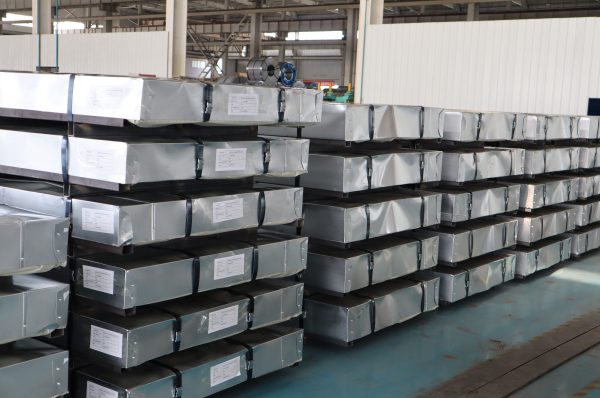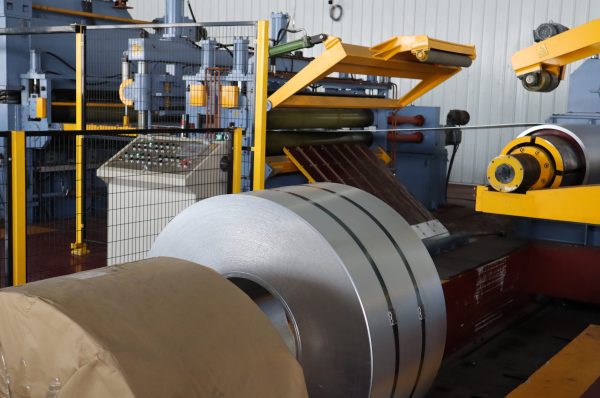With a wide range of applications in modern architecture, steel is one of the most widely used materials in construction. Its use in construction dates back to the 19th century and continues to be favoured because of its unique characteristics.
Steel is suitable for a wide range of construction projects because it is a versatile material that can be easily fabricated, cut and welded into different shapes. It is also an ideal material for structures that require resilience and longevity, as it is known for its strength, durability and ductility.
Apart from its physical characteristics, steel is a sustainable building product. With high recycling rates, steel is an environmentally friendly option for developers and architects.
Steel is also a material capable of domestic production, reducing the need for international shipping and transportation, thereby reducing carbon emissions. This means that using steel in construction not only benefits builders and owners, but also the environment.
PROPERTIES OF STEEL
Steel is an ideal material for construction because it has a unique combination of properties. It can withstand compressive and tensile forces and its strength is unrivalled. Steel is also highly durable, making it suitable for use in a wide range of environments, and can withstand harsh weather conditions and extreme temperatures.
Its ductility makes it easy to form into different shapes, and it can also be easily cut and welded to meet specific construction requirements. Steel is also highly recyclable, making it an environmentally friendly building material.
In modern architecture, steel’s unique properties allow for more creative and efficient designs. From the Eiffel Tower in Paris to the Burj Khalifa in Dubai, steel is used in many of the world’s iconic structures.
These structures, which allowed architects to design taller, more complex and awe-inspiring buildings, would not have been possible without the unique properties of steel. Steel’s versatility is evident in such designs, and its continuing use in modern architecture is assuring its vitality.
USES OF STEEL IN CONSTRUCTION
Steel is used in a variety of ways in construction, from structural framing to cladding and roofing. Steel structural frames are known for their strength and durability and are often used in skyscrapers, bridges and other large structures.
Steel roofing and cladding are also popular in construction because they are lightweight and easy to install. Steel reinforcement is often used in concrete construction to add strength to structures. Steel can also be used in the construction of pipelines as it is resistant to corrosion and can withstand high pressure.
In recent years, steel has also become increasingly popular in residential construction. Steel frame houses are quick to assemble and can be customised to the homeowner’s needs. In addition, using steel in housing reduces risk of damage from natural catastrophes.
Steel’s versatility allows its use in projects ranging from large commercial buildings to small residential houses.
ADVANTAGES OF USING STEEL IN CONSTRUCTION
One of the most important advantages of using steel in the construction industry is its cost effectiveness. Steel is relatively inexpensive compared to other materials and is readily available. This makes it a popular choice for construction projects. Its ease of installation is also a significant advantage. It requires less time and labour than other construction materials.
The overall cost of construction is also reduced because steel structures are highly durable and require minimal maintenance. Steel is also an environmentally friendly option as it is a sustainable material with a high degree of recyclability.
A significant advantage in construction is that steel structures have a long lifespan. Steel can withstand extreme weather conditions and natural disasters. This makes it a more reliable material for buildings that require durability and longevity.
This makes it an ideal material for buildings that are expected to last a long time, such as bridges, skyscrapers and stadiums. In addition, steel structures are easy to dismantle and recycle, reducing the environmental impact of demolition and disposal.
Another advantage of steel buildings is their flexibility. Steel structures can be easily modified or extended to accommodate changes in the function or design of the building.
They are especially useful for commercial properties which might need additional space in the future, or for residential properties which might need to adapt to accommodate growing families. Steel’s flexibility also allows for innovative design solutions that would not be possible with other materials.
MAINTENANCE AND PRESERVATION OF STEEL IN CONSTRUCTION
Regular inspection and maintenance is essential to ensure the longevity of steel structures. The structure should be inspected for signs of corrosion and other damage, and any repairs that are necessary should be carried out in a timely manner.
In addition, corrosion can be prevented and the life of the structure extended by applying a protective coating to the surface of the steel. The risk of corrosion can also be reduced by proper drainage and ventilation.
Appropriate design and construction techniques are also required to maintain the structural integrity of steel. Steel structures should be designed to be resistant to the effects of corrosion and fire, and appropriate fire protection measures should be in place. To ensure the stability and safety of the structure, proper installation and anchorage of steel components is also essential.
CONCLUSION
In conclusion, steel is a versatile and reliable material that has been used in construction for over a century. Its unique properties make it an ideal choice for a wide range of building projects, including structural framing, roofing, reinforcement and cladding.
While it has its drawbacks, such as susceptibility to corrosion and fire, the benefits of using steel in construction outweigh the drawbacks. With proper maintenance and preservation, steel structures can be durable, cost effective and sustainable, making it an ideal choice for modern construction.
As architecture continues to evolve, steel will undoubtedly remain a vital material in the construction industry.
If you are interested in a quote for our steel, please contact us today.




